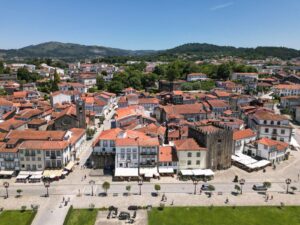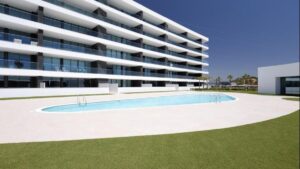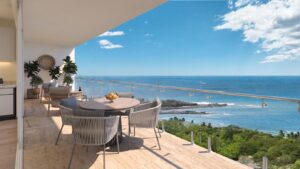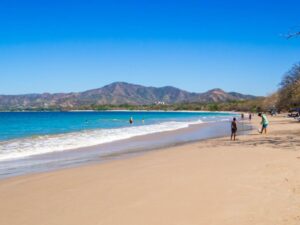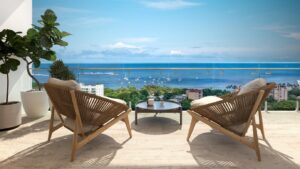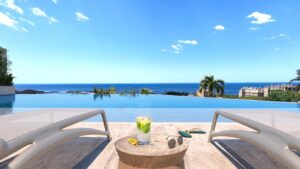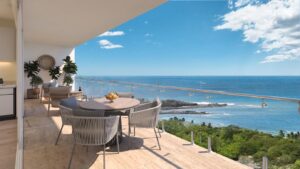Tuesday, November 09, 2021
 Dear Your Overseas Dream Home Reader,
Dear Your Overseas Dream Home Reader,
Few regions in the world garner such universal admiration as the South of France.
And justifiably so…
Its stunning Mediterranean coastline backs into rolling, vineyard-lined hills. You can visit medieval hilltop towns and castles, drive winding clifftop roads or along fields of lavender or ancient olive groves.
There is sunshine 300 days a year, and even the winters are lovely here. A special quality of light has attracted artists here for centuries. For everyone else, it’s just an ideal setting for a coffee at dawn or a glass of wine at dusk.
However, the French Riviera’s long-established status as a favorite amongst the jet-set, means that it’s one of the most expensive markets in France. Its glitz and glamour comes with a price.
But, look beyond Cannes, Nice, Antibes or Saint-Tropez and you can still find good value.
In fact, there’s another South of France where expats and second home owners can find everything that makes the French Riviera so special, while avoiding the high cost.
It’s a place favored by many French, that’s becoming increasingly popular with European second home owners and Americans too.
I’m talking about the Languedoc…
Once known as the “poor man’s Provence” the Languedoc region of southern France is slowly arriving as a destination. In fact, for six years pre-pandemic, tourist numbers here rose by an average of 17% a year.
I scouted the Languedoc in August 2019 searching for a profitable property to use for a few months of the year out of high season, when the weather’s still warm—this was before I decided on Portugal’s Silver Coast instead. I was also interested to see how this part of southern France stacked up in terms of value and opportunity against its famous neighbor, Provence.
The Languedoc’s Mediterranean coast is part of France’s sunbelt and its long sandy beaches are still fairly uncrowded. Inland you’ll find wild mountain ranges, dramatic gorges, and stunning hill towns that many Francophiles will tell you are more authentically French than what you’ll find in over-touristed and over-priced Provence.
|
|
For many buyers here, who can’t afford or just don’t want to live on the French Riviera or in the popular villages in Provence, the Languedoc is a value play. In some cases, you will pay one third to one quarter of what you could expect to pay in glamorous Provence next door.
Buy the right village home in the Languedoc, market it the right way, and you could lock in a decent 6% gross yield. It’s a way of owning a historic home in France that pays. Pre-Covid, I figured you could see annualized capital appreciation of 6% over the next 10 years, but since then, values (for those who bought well) have already spiked by 25% or more. But there’s still more to come, and other pockets where the spike hasn’t hit yet.
Mortgage finance is available from under 2%, although the criteria are less flexible than what I have found in Portugal and Spain.
Languedoc-Roussillon essentially covers the area of southern France where the Occitan language was once the common tongue. It’s just west of Provence, stretching all the way to the Spanish border where you’ll find Roussillon—French Catalonia—sandwiched alongside the Pyrenees Mountains. In 2016, the region joined with the Midi-Pyrénées region and was christened Occitanie. But for most folks, the Languedoc is still the Languedoc.
Its sun-drenched coastal areas offer Mediterranean beaches and colorful resort towns like Coliere. It’s also where you’ll find most of the big towns and cities—like Perpignan and Montpellier.
|
|
As you move inland from the sea, the sun-drenched coastal plain gives way to rolling, forested hills and jagged mountains. No other part of France I know of is so varied. In fact, the micro-climates you’ll find in the Languedoc can pose a challenge to the real estate buyer. A short drive from one village to another can mean a difference of a few degrees in temperature.
That matters if you’re considering a place you can rent out in the peak months of the summer and spend time enjoying during the off season. You want to buy in a place where the climate is still warm enough for short sleeves in September and April. You’ll find that in the Languedoc, but my point is you need to choose carefully.
The Languedoc is the biggest wine-producing region in France. In fact, it accounts for 5% of global wine production. It was historically known for producing a plonk wine that kept the miners and industrial workers of the north liquored up, but things are changing. Wine tourism is growing globally and Languedoc winemakers have caught on. You’ll find many now offering well-heeled visitors a boutique experience.
|
|
It also helps that the Languedoc has so much else to offer. The restored medieval city of Carcassonne gets around 3 million visitors a year. The Canal du Midi runs right through the region from Toulouse to join the Mediterranean near Sète. People come from around the world to cruise on houseboats or cycle along the towpath.
Plus, the Languedoc is a well-connected region with six airports connecting to destinations across Europe and North Africa.
My contact on the ground there tells me that the pandemic has driven French buyers from larger towns to look for homes in the Languedoc countryside and in its small villages.
But what’s very interesting here is what I’m calling the “Brexit effect.” For years, British expats have been by far the largest group of second-home owners in France. But now Brexit is beginning to change things. Less Brits are buying, and more are selling up. Thousands of expats who lived in France for years failed to apply for residency before the deadline and are now limited to only spending 90 out of every 180-day period in France (or anywhere in the EU).
That means right now is the best possible time to find some motivated sellers.
I like expat-owned properties in particular because many of these owners embarked on extensive renovations, thus creating many of the very high-quality resale properties we have today.
That’s why I’m gearing up to send my scouts on “Mission France.” When my guys went to Italy in September they found zero British buyers but a few motivated British sellers. In France, I suspect this trend of British sellers will be at its strongest. And I want us to be there to get the best deals. Some of France’s most beautiful regions like Dordogne, Charente, and the Languedoc are hotbeds of British expats… Many of whom are now looking for a quick exit.
Tomorrow, I’m going to share some promising country and village properties in the Languedoc that have caught my attention during some initial research.
Stay tuned…
Wishing you good real estate investing,
|
|
Ronan McMahon, Real Estate Trend Alert
|
Learn More About Living in France If you’d like to learn more about living in France, either part time or full time, then our friends over at International Living can help. They have tons are useful (free) info on their website if you’re considering a move to La Belle France. Learn about the process for buying your dream home…what type of visa you’ll need…how much it’ll cost you to live there (it’s less than you might think!)…and much, much more. Head over to the International Living website to check it all out…click here for more info on living in France. |
Like what you’re reading?
Send your thoughts to feedback@realestatetrendalert.com. I’ll post and respond to as many of your emails as I can right here in the e-letter. Find out more about our feedback policy here.
|
Connect with us on Instagram
|
